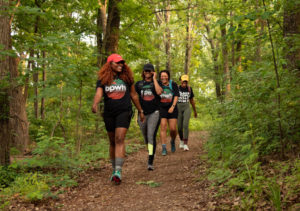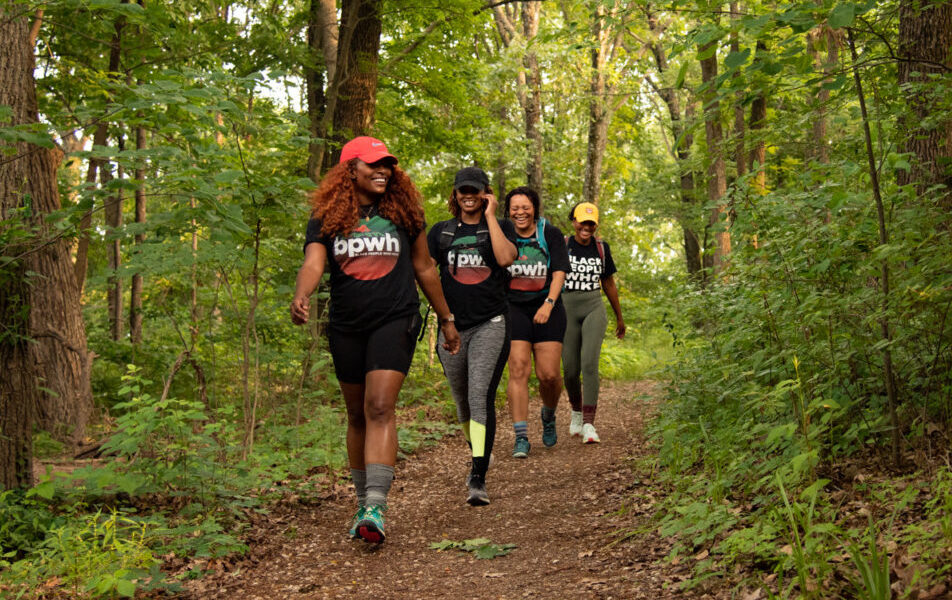
In an attempt to escape the mayhem brought on by COVID-19, many Saint Louisans have sought and found solace in the great outdoors. Seven months before the pandemic, two locals founded an organization called Black People Who Hike (BPWH).
As a teenager Toni Burgess had the opportunity to attend a five year summer camp. The camp taught her about hiking, conservation, and helped her love for the environment blossom. Before the camp “I didn’t find anything wrong with Black people not having exposure to the outdoors and once I had that experience it opened my eyes” Burgess said. In an attempt to hold on to the joy she felt, Burgess has been going camping “encouraging other Black people to get outside.” Meanwhile Debbie Njai, the other founder of BPWH, had a different experience.
As a child, Debbie Njai would often play outside until the sun came down but as she got older she found herself getting further away from the outdoors. Although she’d grown up outdoorsy, it wasn’t until her early thirties when a friend took her for her first hike. “I immediately fell in love with it (hiking)” Njai said. But on her hike she couldn’t help but notice that there weren’t a lot of people that looked like her and when she would try to invite people out there was a lot of reluctance. “It was something that I wanted other people to experience and that’s how BPWH was born,” Njai said. “When I started this, I didn’t realize that this was environmental justice. It was just like hey, I like hiking, I want to do this, and it’s like no, we are an environmental organization. We are a justice organization. I am an activist.”
Njai hopes “to empower, educate and re-engage Black people to the outdoors through wellness campaigns, advocacy, hiking, camping, and kayaking” Njai says. Even through the pandemic, they have remained committed to their mission. In 2020, BPWH led about 20 people on a hike from Johnson Shut-Ins State Park to the top of Taum Sauk Mountain. This hike is about 14 miles and takes about 8 to 9 hours to complete. “We really pushed people. They’d probably never even have walked that long in their life,” Burgess said. Then in 2021 they led 40 people on a hike in Hawn State Park. “We had to cross this crazy body of water to get everyone across and it was super exhilarating to see people excited about being out in nature,” Burgess said. Njai agreed and added that “it’s beautiful to have a safe space where Black people can recreate outside and feel comfortable and that they belong.” Njai also touched on how she’s noticed members bringing their kids and other family members out to their events which is “really building generational health which is the vision for BPWH.”
In order to continue doing the great work “we’ve recruited and onboarded 15+ people to our leadership team, continued on with Black Hikers week, and have grown our social media by ten thousand,” Njai said. In the future Njai is excited to take BPWH on the road and host events in different cities.Through these events, Njai hopes to grow their membership base and “offer resources to the Black outdoor community.”
Burgess hopes that through BPWH they can help “get rid of that stigma of mental unwellness. I feel like through these activities where we’re challenging people, they are coming more into themselves and realizing that it’s okay not to be okay,” Burgess says. Although they’ve already impacted so many people, Njai can not wait to continue to change “the narrative in terms of representation. We’re changing people’s lives in terms of health, wellness, mental health, physical health and the environmental space as well.” Njai closed off the interview by expressing her excitement for the future of Black recreational activities. “I can only imagine five to ten years from now, what everything is going to look like. What the landscape of the outdoors, in terms of Black people and people of color in the outdoor space, in terms of what is deemed a Black activity to do. It’s really really exciting.”

